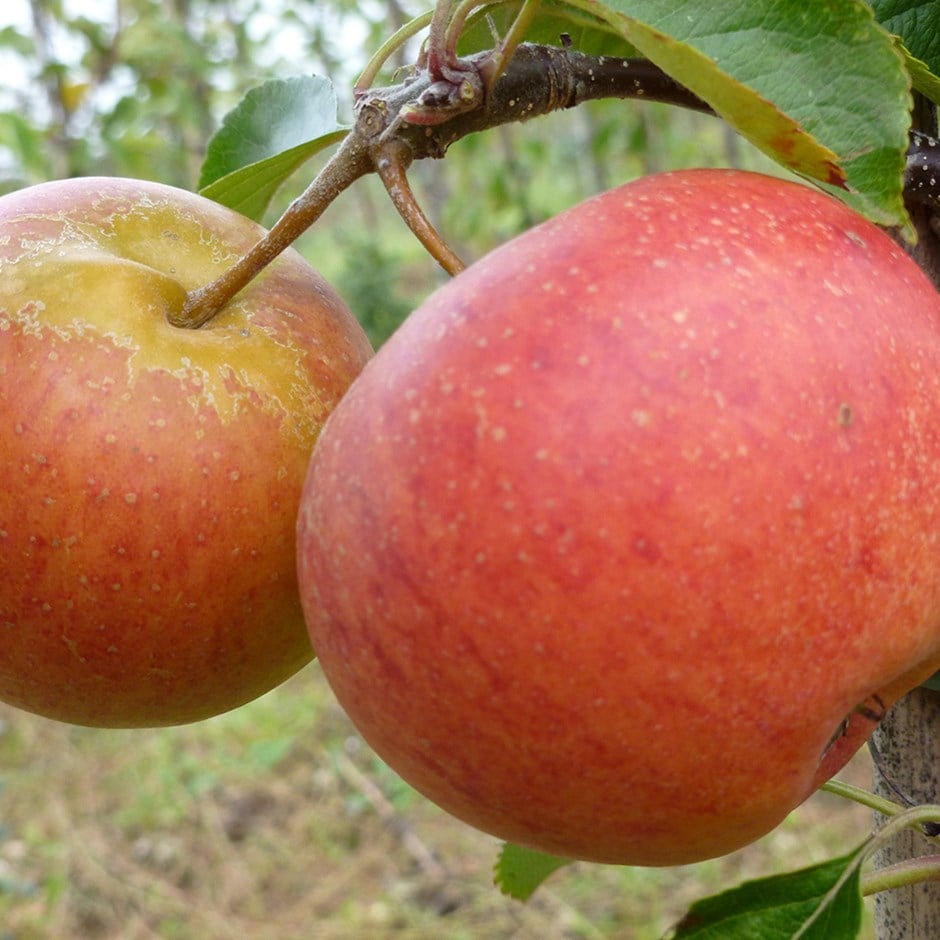apple Rubinette ('Rafzubin')
eating / dessert apple
- 9 litre pot | M26 root stock | 1.2m
- £49.99
- In stock (shipped within 3-5 working days)
Delivery options
- Standard £7.95
- Position: full sun
- Soil: moderately fertile, moist, well-drained soil
- Rate of growth: average
- Flowering period: March to April
- Hardiness: fully hardy
- Garden care: When planting your apple tree, prepare a hole up to three times the diameter of its root system. Fork over the base of the pit in readiness, incorporating plenty of organic matter into the backfill and planting hole. Avoiding frozen and waterlogged soil, trees should be planted out as they arrive. If you've ordered a bare root tree, soak the roots in a bucket of water for half an hour prior to planting - or if this is not possible, they can be heeled in temporarily, covering their roots with soil, or potted up. Once in the ground, stake firmly and keep the base weed-free. Apply a balanced fertiliser in early spring to support growth and fruiting and provide regular watering during hot, dry spells. The main winter prune, avoiding frosty conditions, involves removing dead, dying, and diseased wood to create an open crown. Additionally, reduce leaders and laterals by a third to establish an airy structure without crisscrossing branches. In August, summer prune by shortening side shoots longer than 20cm (8”) back to three leaves, promoting fruit ripening and encouraging more fruit buds.
‘Rubinette’, also known as 'Rafzubin', was developed by Walter Hauenstein, a Swiss grower from Rafz between 1964 and 1982. Intended to combine the excellent yield and storage traits of 'Golden Delicious' with the deeper flavours of 'Cox's Orange Pippin'. ‘Rubinette’ displays characteristic orange and dull red streaks on a light green-yellow backdrop, and the apples are generally small to medium-sized, with superb flavour. With a wider climate range compared to 'Cox's Orange Pippin', ‘Rubinette’ proves a better choice for gardeners in areas with high summer temperatures.
Pollination information: This apple belongs to pollination group 3, and is not self fertile, so requires a pollinating partner to produce a crop of apples. Cross-pollinate with other apples in this group or those from group or those from groups 2 or 4.
Pollination information: This apple belongs to pollination group 3, and is not self fertile, so requires a pollinating partner to produce a crop of apples. Cross-pollinate with other apples in this group or those from group or those from groups 2 or 4.
